 The Glass Ocean by Beatriz Williams, Lauren Willig, Karen White
The Glass Ocean by Beatriz Williams, Lauren Willig, Karen White Format: eARC
Source: supplied by publisher via Edelweiss
Formats available: hardcover, paperback, large print, ebook, audiobook
Genres: historical fiction
Pages: 408
Published by William Morrow on September 4, 2018
Purchasing Info: Author's Website, Publisher's Website, Amazon, Barnes & Noble, Kobo, Bookshop.org
Goodreads
From the New York Times bestselling authors of The Forgotten Room comes a captivating historical mystery, infused with romance, that links the lives of three women across a century—two deep in the past, one in the present—to the doomed passenger liner, RMS Lusitania.
May 2013Her finances are in dire straits and bestselling author Sarah Blake is struggling to find a big idea for her next book. Desperate, she breaks the one promise she made to her Alzheimer’s-stricken mother and opens an old chest that belonged to her great-grandfather, who died when the RMS Lusitania was sunk by a German U-Boat in 1915. What she discovers there could change history. Sarah embarks on an ambitious journey to England to enlist the help of John Langford, a recently disgraced Member of Parliament whose family archives might contain the only key to the long-ago catastrophe. . . .
April 1915Southern belle Caroline Telfair Hochstetter’s marriage is in crisis. Her formerly attentive industrialist husband, Gilbert, has become remote, pre-occupied with business . . . and something else that she can’t quite put a finger on. She’s hoping a trip to London in Lusitania’s lavish first-class accommodations will help them reconnect—but she can’t ignore the spark she feels for her old friend, Robert Langford, who turns out to be on the same voyage. Feeling restless and longing for a different existence, Caroline is determined to stop being a bystander, and take charge of her own life. . . .
Tessa Fairweather is traveling second-class on the Lusitania, returning home to Devon. Or at least, that’s her story. Tessa has never left the United States and her English accent is a hasty fake. She’s really Tennessee Schaff, the daughter of a roving con man, and she can steal and forge just about anything. But she’s had enough. Her partner has promised that if they can pull off this one last heist aboard the Lusitania, they’ll finally leave the game behind. Tess desperately wants to believe that, but Tess has the uneasy feeling there’s something about this job that isn’t as it seems. . . .
As the Lusitania steams toward its fate, three women work against time to unravel a plot that will change the course of their own lives . . . and history itself.
My Review:
The Glass Ocean is the braided story of three women, separated by time, place, class or all of the above, whose lives are roiled by the wake of the RMS Lusitania, struck by a torpedo from a German U-boat off the coast of Ireland on May 7, 1915.
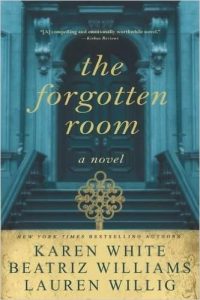 As with the previous book by the Team W, The Forgotten Room, the story of The Glass Ocean slips from character to character – from woman to woman – as the reader experiences each perspective and follows the treasure hunt as all three of the stories finally come together.
As with the previous book by the Team W, The Forgotten Room, the story of The Glass Ocean slips from character to character – from woman to woman – as the reader experiences each perspective and follows the treasure hunt as all three of the stories finally come together.
And the truth sets them all free. Freedom from obscurity in the past, and freedom from heartbreak and loss in the present.
In exploring the truth about her great-grandfather, a steward on the RMS Lusitania, Sarah thinks that she’s going to be writing a spy thriller – if not the biography of a man who wrote spy thrillers. But as we follow her on her treasure hunt through the life and archives of Robert Langford, a passenger on the Lusitania and the author of spy thrillers that Sarah thinks were even better than Ian Fleming’s, we also see those pivotal events on board the Lusitania through the eyes of two women who both loved him.
The story that Sarah thinks she’s looking for is not the one she finds. But that’s the one that she writes. And in the writing of it, she brings the lives and accomplishments of two fascinating women back into the light of day.
And rescues herself along the way.
Escape Rating A-: Today, as this review is posted, is the 18th anniversary of the 9/11 attacks. This book is an oddly appropriate read for today, as the sinking of the Lusitania and 9/11 were both human-created disasters that were intended to start a war. And both did, after their different fashions.
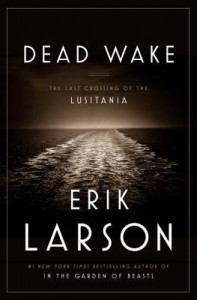 If you are interested in reading more about the Lusitania, I highly recommend – as does Team W in the afterword of The Glass Ocean, Dead Wake by Erik Larson. Dead Wake is the best kind of narrative nonfiction, in other words, a true story that reads as compellingly as if it were a novel.
If you are interested in reading more about the Lusitania, I highly recommend – as does Team W in the afterword of The Glass Ocean, Dead Wake by Erik Larson. Dead Wake is the best kind of narrative nonfiction, in other words, a true story that reads as compellingly as if it were a novel.
But The Glass Ocean, like Dead Wake, confines itself to events that take place aboard the ocean liner, or that occurred to its survivors in the aftermath. The reader can and does speculate about the surrounding politics, but the story is the story of the doomed ship and what happened after.
While Caroline’s and Tess’ stories are part of that fateful voyage, Sarah’s is the story of the aftermath – nearly 100 years in the aftermath. I found Sarah’s story to be the most compelling – but then she’s the one doing the historical research. I always love the treasure hunt aspect of this kind of story, where the clues are revealed, sometimes slowly and carefully, and sometimes by “Eureka!” – and there are plenty of moments of both kinds in Sarah’s search.
Sarah’s story feels “present”, while Caroline’s and Tess’ stories feel almost as though they are leading the reader to the story behind those clues. And I was guessing right along with Sarah, sometimes, but not always correctly.
Part of what makes this so much fun is the way that in both time periods both end up as just the kind of spy thriller that Robert Langford used to write. Someone betrayed the Lusitania to the Germans. Someone smuggled a critical munitions formula on board the ship. Someone wanted to sell it to the Germans. Someone wanted to secure it for the British.
And over 1,000 people died for it.
But when Sarah unearths those secrets, she finds much more than she ever bargained for. Whether or not she’ll be able to keep what she’s found is a journey that is well-worth taking with her.


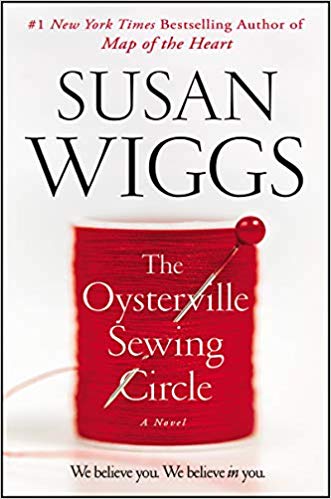 The Oysterville Sewing Circle by
The Oysterville Sewing Circle by 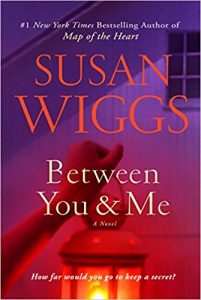 The Oysterville Sewing Circle turned out to be a lovely story with multiple themes – and everything I expected from this author. Particularly after last year’s marvelous
The Oysterville Sewing Circle turned out to be a lovely story with multiple themes – and everything I expected from this author. Particularly after last year’s marvelous  Lady in the Lake by
Lady in the Lake by 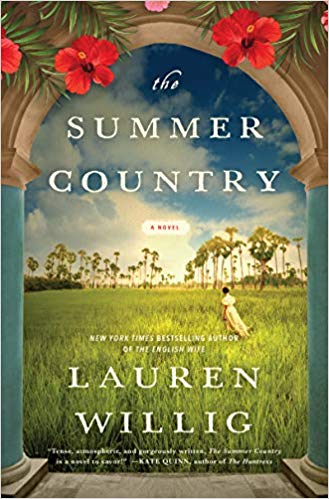 The Summer Country by
The Summer Country by 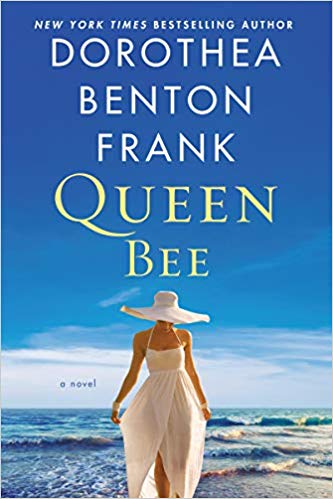 Queen Bee by
Queen Bee by 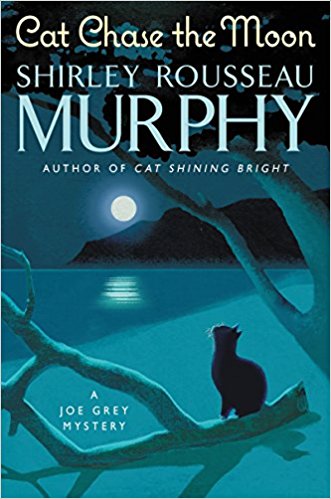 Cat Chase the Moon (Joe Grey #21) by
Cat Chase the Moon (Joe Grey #21) by 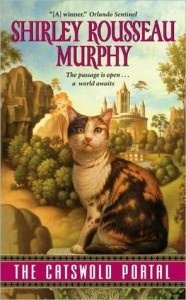 But this entry isn’t the least bit fluffy. It also ends on more of a fantasy note than has been seen in this series in a while, in spite of the series origins in the author’s contemporary fantasy novel
But this entry isn’t the least bit fluffy. It also ends on more of a fantasy note than has been seen in this series in a while, in spite of the series origins in the author’s contemporary fantasy novel 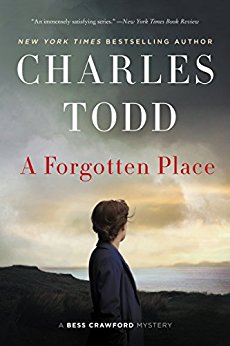 A Forgotten Place (Bess Crawford, #10) by
A Forgotten Place (Bess Crawford, #10) by 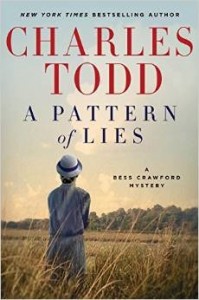 The atmosphere of this particular story will remind series readers of an earlier story,
The atmosphere of this particular story will remind series readers of an earlier story, 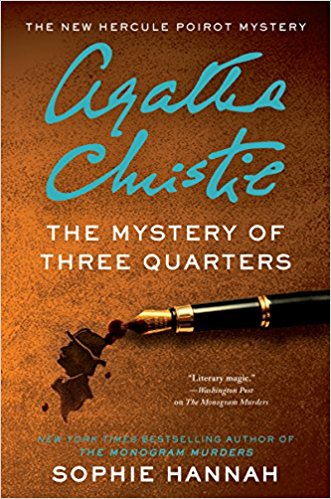 The Mystery of Three Quarters (The New Hercule Poirot Mystery #3) by
The Mystery of Three Quarters (The New Hercule Poirot Mystery #3) by  This is now the third of Sophie Hannah’s New Hercule Poirot mysteries (after
This is now the third of Sophie Hannah’s New Hercule Poirot mysteries (after 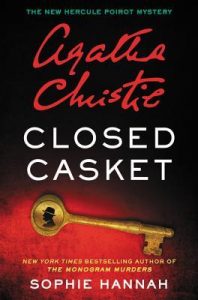 Escape Rating B: It’s the must-keep-reading-ness aspect of this book that sticks with me. The case, as bizarre as it is (and Poirot’s cases were often a bit “out there”) pulls the reader along from sentence to sentence and paragraph to paragraph and doesn’t let go until the end.
Escape Rating B: It’s the must-keep-reading-ness aspect of this book that sticks with me. The case, as bizarre as it is (and Poirot’s cases were often a bit “out there”) pulls the reader along from sentence to sentence and paragraph to paragraph and doesn’t let go until the end. It all gallops along brilliantly as its going on, but looking back I’m not quite sure it all hangs together. But still, it was a terrific ride while it was happening, and I enjoyed every page of it.
It all gallops along brilliantly as its going on, but looking back I’m not quite sure it all hangs together. But still, it was a terrific ride while it was happening, and I enjoyed every page of it.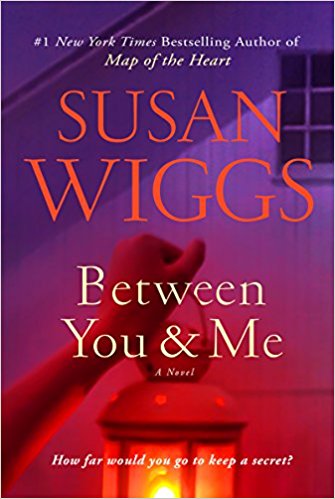 Between You and Me by
Between You and Me by 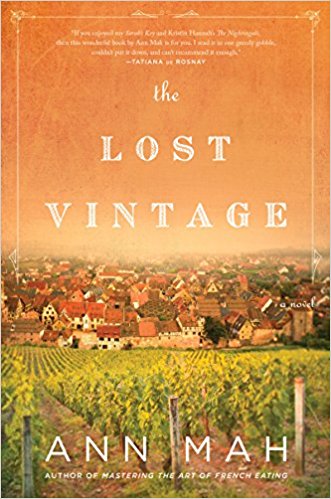 The Lost Vintage by
The Lost Vintage by